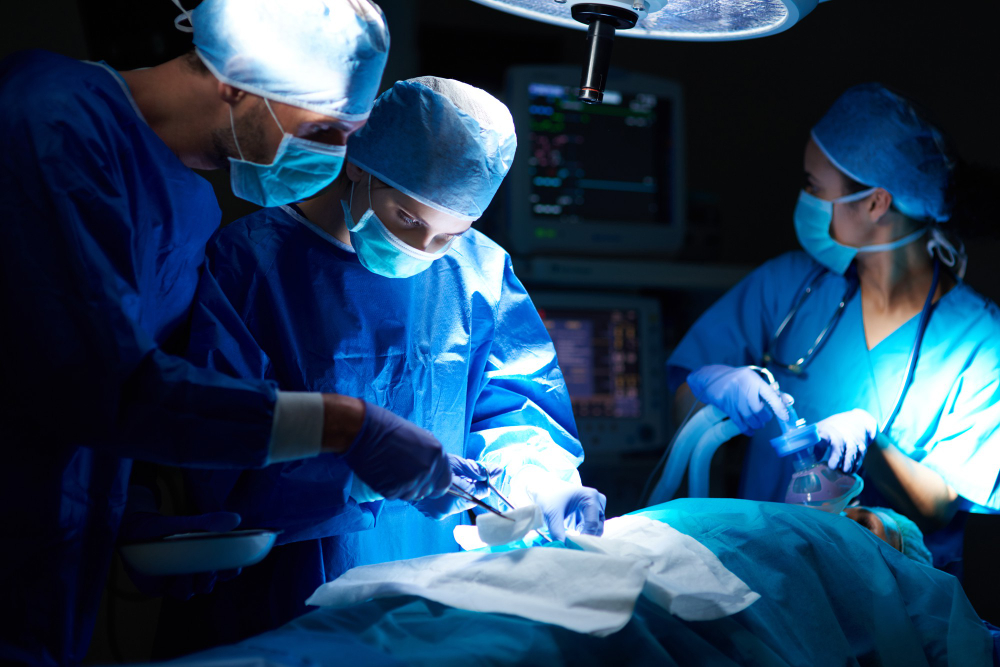
What is Hysteroscopic Guided D&C?
Hysteroscopic guided dilation and curettage (D&C) is a minimally invasive surgical procedure used to diagnose and treat various gynecological conditions affecting the uterus, such as abnormal uterine bleeding, polyps, fibroids, or retained products of conception. It involves the insertion of a hysteroscope (a thin, flexible tube with a camera) through the vagina and cervix into the uterus, allowing visualization of the uterine cavity and guiding the removal of abnormal tissue using specialized instruments.
How is Hysteroscopic Guided D&C Performed?
Hysteroscopic guided D&C is typically performed as an outpatient procedure under local or general anesthesia. The procedure involves the following steps:
- Preparation: The patient is prepared for surgery, and anesthesia is administered to ensure comfort during the procedure.
- Insertion of hysteroscope: A hysteroscope is inserted through the vagina and cervix into the uterus, allowing the surgeon to visualize the uterine cavity on a monitor.
- Dilation of the cervix: The cervix may be dilated (widened) using dilators to allow access to the uterine cavity.
- Curettage: Specialized instruments, such as curettes or small forceps, are inserted through the hysteroscope to gently remove abnormal tissue, polyps, or fibroids from the uterine lining.
- Completion: Once the procedure is complete, the hysteroscope and any instruments are removed, and the patient is monitored in the recovery area before being discharged home.
Who is a Candidate for Hysteroscopic Guided D&C?
Women experiencing abnormal uterine bleeding, suspected uterine polyps, fibroids, or retained products of conception may be candidates for hysteroscopic guided D&C. A thorough evaluation by a gynecologist or reproductive specialist is necessary to determine the underlying cause of symptoms and assess the suitability for surgery. Factors such as the patient's medical history, diagnostic tests, and reproductive goals will also be considered in the decision-making process.
What is the Recovery Process Like After Hysteroscopic Guided D&C?
The recovery process after hysteroscopic guided D&C is usually quick, with most patients able to return home the same day as the procedure. Some mild cramping, spotting, or discharge may be experienced in the days following surgery, but these symptoms typically resolve on their own. Pain medication, rest, and instructions for caring for the surgical site will be provided to promote healing and prevent complications.
What is the Recovery Process Like After Cancer Surgery?
The recovery process after cancer surgery varies depending on the type and extent of the surgery performed, as well as individual healing factors. In general, patients can expect to experience some discomfort, fatigue, or other side effects in the days and weeks following surgery. Pain medication, antibiotics, and instructions for caring for the surgical site will be provided to promote healing and prevent complications. Rehabilitation, physical therapy, or other supportive care may be recommended to help patients regain strength and function after surgery.
What are the procedure after surgery?
Rest and Limit Activity : Avoid strenuous activities, heavy lifting, and vigorous exercise for the recommended period.
Keep the Area Clean : Gently clean the surgical area with water and mild soap as directed by your surgeon. Pat the area dry with a clean towel, and avoid rubbing or scrubbing.
Take Prescribed Medications : Take any prescribed pain medications, antibiotics, or other medications as instructed by your surgeon to manage pain and prevent infection.
Avoid Sexual Activity : Refrain from sexual intercourse and other sexual activities until your surgeon advises it is safe to do so. This typically takes several weeks to a month or more, depending on individual healing.
Wear Loose Clothing : Wear loose-fitting clothing, preferably cotton underwear, to minimize friction and promote airflow to the surgical area.
Attend Follow-Up Appointments : Keep all scheduled follow-up appointments with your surgeon to monitor your healing progress and address any concerns or complications promptly.
Avoid Tampons and Menstrual Cups : Refrain from using tampons and menstrual cups during your recovery period to prevent irritation and infection.
Stay Hydrated and Eat Nutritious Foods : Drink plenty of water and eat a balanced diet rich in vitamins and nutrients to support healing and boost your immune system.
Why Choose VMG Hospital for Hysteroscopic Guided D&C?
VMG Hospital in Hisar, Haryana, offers expert care and advanced treatment options for women requiring hysteroscopic guided D&C. Our team of experienced gynecologists, reproductive specialists, and supportive care professionals is dedicated to providing personalized care and support throughout the diagnostic and treatment process. With state-of-the-art facilities, advanced surgical techniques, and a patient-centered approach, VMG Hospital is committed to delivering the highest quality of care and improving outcomes for women with gynecological conditions.